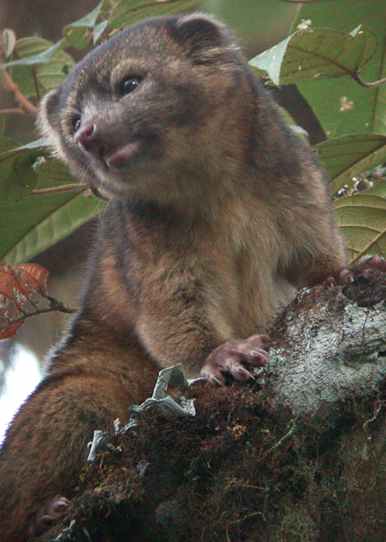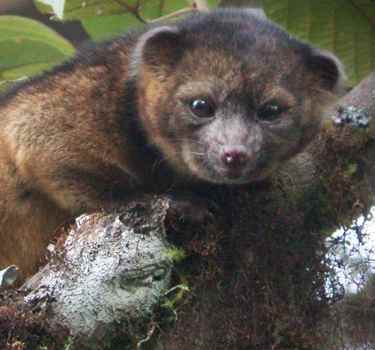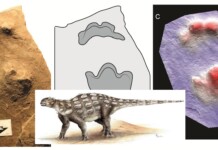 Described as a cross between a house cat and a teddy bear, scientists announced the identification of a new mammal species, the olinguito.
Described as a cross between a house cat and a teddy bear, scientists announced the identification of a new mammal species, the olinguito.
In the raccoon family, Bassaricyon neblina is the first mammalian carnivore species to be added in the Americas in 35 years, scientists at the Smithsonian Institution in Washington said.
The 2-pound olinguito (oh-lin-GHEE-toe), with its large eyes and woolly orange-brown fur, is native to the cloud forests of Colombia and Ecuador.
“The discovery of the olinguito shows us that the world is not yet completely explored, its most basic secrets not yet revealed,” said Kristofer Helgen, curator of mammals at the Smithsonian’s National Museum of Natural History and leader of the team reporting the new discovery. “If new carnivores can still be found, what other surprises await us? So many of the world’s species are not yet known to science. Documenting them is the first step toward understanding the full richness and diversity of life on Earth.”
But did the olinguito still exist in the wild?
A lucky break came with the discovery of a camcorder video which provided confirmation of the olinguito’s existence via a few seconds of grainy video shot by their colleague Miguel Pinto, a zoologist in Ecuador, Helgen and Roland Kays, director of the Biodiversity and Earth Observation Lab at the North Carolina Museum of Natural Sciences set off on a three-week expedition to find the animal themselves.
 Working with Pinto, they found olinguitos in a forest on the western slopes of the Andes, and spent their days documenting what they could about the animal―mostly active at night, is mainly a fruit eater, rarely comes out of the trees and has one baby at a time.
Working with Pinto, they found olinguitos in a forest on the western slopes of the Andes, and spent their days documenting what they could about the animal―mostly active at night, is mainly a fruit eater, rarely comes out of the trees and has one baby at a time.
Unfortunately, 42 percent of historic olinguito habitat has already been converted to agriculture or urban areas.
The team’s discovery is published in the Aug. 15 issue of the journal ZooKeys.
(READ more at the Smithsonian Institution)



















